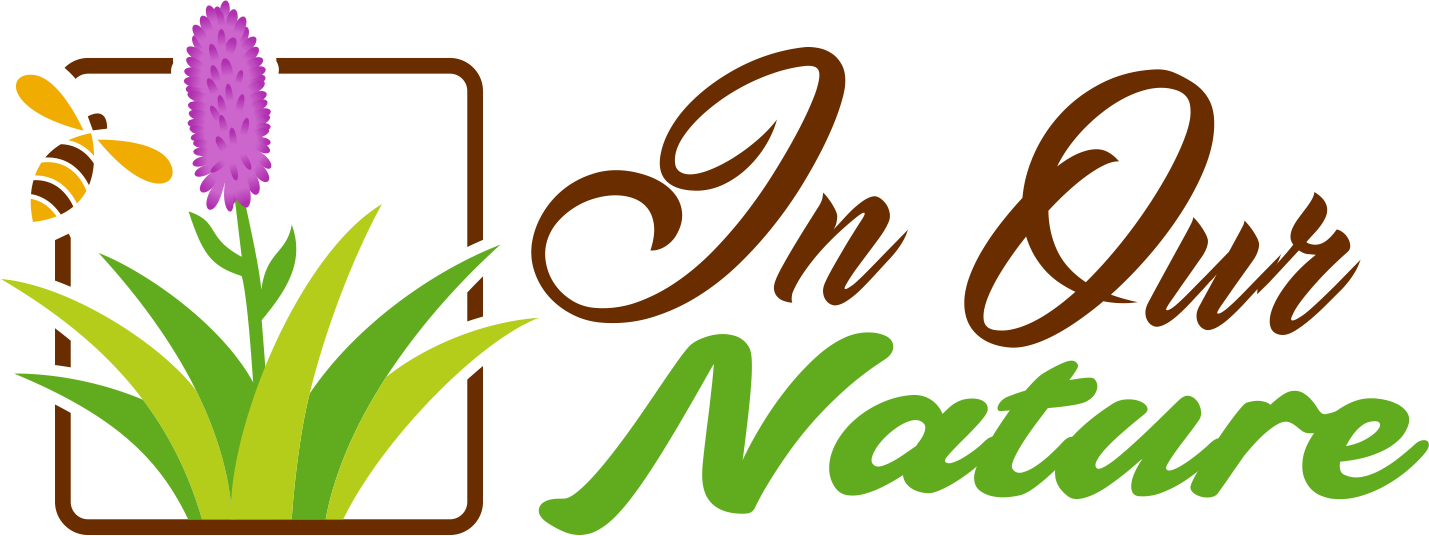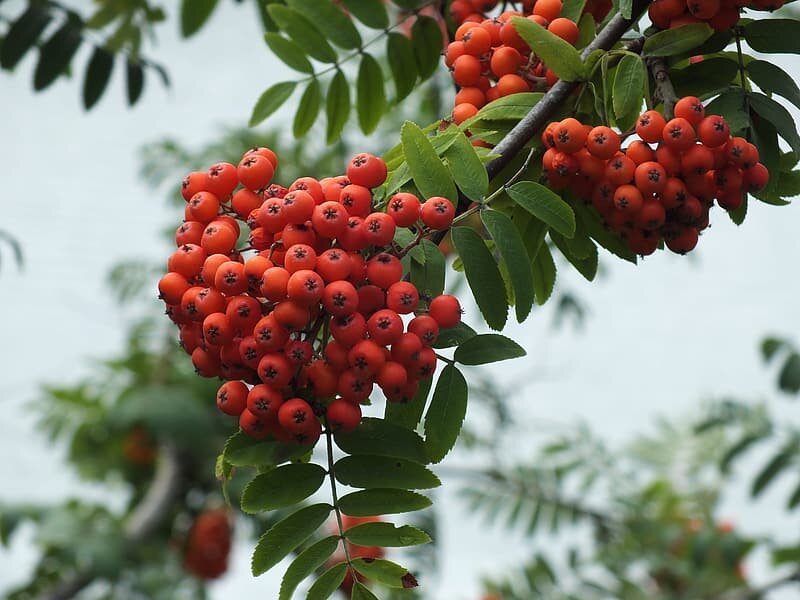Native Berry-producing Shrubs For Birds
Native berry producing trees and shrubs are important food sources for birds as they fuel up for their southernly migrations in the fall. This relationship is important for the shrubs too as the birds help spread their seeds.
Unfortunately, many invasive shrubs such as European Buckthorn and Japanese Barberry are also eaten by migratory birds who in turn spread their seeds, making then increasingly common in our landscapes and gardens. Despite this, studies show that native birds still prefer the berries of native species. This means that native shrubs will become increasingly important in our landscapes as invasive plants continue to spread.
Not all berries are equal
In fact, one study suggests that, during fall migration, fruits of native shrubs are of greater nutritional value to migrating songbirds than the fruits of invasive shrubs. When birds are migrating in the fall, they need berries with a high fat content to fuel their journey. Resident birds also need these high fat berries to survive the cold winter months. Unfortunately, studies suggest that berries found on invasive shrubs typically have a lower fat content than native shrubs.
This means our birds need native shrubs more than ever!
Birds need more than just berries
It is important to note that birds need more than just berries to complete their lifecycles. In Fact, 97% of birds only feed their young insects, not seeds or berries. Their preferred choice are caterpillars because they are high in protein and easy to eat (compared to the hard shell of a beetle). If we want to help birds feed their young then we need to plant host plants that feed the insects that birds need. According to research done by Doug Tallamy, certain plants support more caterpillar species than others. The super-star caterpillar producers are Oaks, Willows and Cherries.
Native Berry-producing shrubs for birds
Chokecherry (Prunus virginiana)
Mountain Ash (Sorbus americana)
Winterberry (Ilex verticillata)
Serviceberry (Amelanchier canadensis)
Pagoda Dogwood (Cornus alternifolia)
Chokecherry (Prunus virginiana)
1. Chokecherry (Prunus virginiana)
Height: 25ft
Moisture: Moist to dry
Light: Sun to shade. May not fruit in shade.
Chokecherry is an adaptable, suckering shrub with lots to offer wildlife of all kinds. In spring, fragrant while flower clusters adorn the shrub and are highly attractive to pollinators. Come late summer, the flowers give way to dark red, pea-sized berries that look like little jewels.
The fruits don’t last long before birds have eaten them up. Chokecherry feeds birds such as Thrushes, Woodpeckers, Wild Turkey, Scarlet Tanagers and many more.
Despite the name, Chokecherry fruit is edible to humans too.
Mountain Ash (Sorbus americana)
2. Mountain Ash (Sorbus americana)
Height: 30ft
Moisture: Moist to dry
Light: Sun
Mountain Ash is a small deciduous tree with smooth gray bark and attractive Ash-like foliage. Beautiful white flowers emerge in the spring, to feed pollinators, and turn into orange-red fruit in the fall months. The berries remain on the tree even after all the leaves have fallen, giving this tree great winter interest in the garden.
The red berries of Mountain Ash are important food for birds such as Grouse, Robins, Bluejays and especially Cedar Waxwings.
Winterberry (Ilex verticillata)
3. Winterberry (Ilex verticillata)
Height: 12ft
Moisture: Wet to medium
Light: Sun to part shade
Winterberry is a deciduous holly that typically occurs in wet areas like swamps and wetlands. In your garden it will do well in medium to wet soils in areas with a good amount of organic matter in the soil. The flowers are nothing to brag about , however, they give way to a crop of showy, bright red berries. These berries hang onto the branches well after the leaves have fallen, giving this shrub excellent winter interest in the garden.
Birds most commonly attracted to Winterberry include American Robins, Cedar Waxwings, Catbirds and Eastern Bluebirds.
Note that only female trees will produce berries.
Serviceberry (Amelanchier canadensis)
4. Serviceberry (Amelanchier canadensis)
Height: 25ft
Moisture: Medium, well-drained
Light: Sun to part shade
Serviceberry is large, multi-stemmed shrub with smooth gray bark and attractive fall foliage. The May-blooming flowers attract many different types of insects and pollinators. Come mid-summer, the flowers turn into red berries that go dark purple colour as they ripen.
The berries of Serviceberry are a highly sought-after food source for many different birds species including Catbirds, American Robins, Cedar Waxwings, Northern Cardinals, Brown Thrashers and many more. The berries are edible for humans too, but good luck getting to them first!
Serviceberry is also a popular shrub for nesting birds.
Nannyberry (Viburnum lentago)
5. Nannyberry (Viburnum lentago)
Height: 16ft
Moisture: Medium, well-drained
Light: Sun to part shade
Nannyberry is a large, multi-stemmed shrub with flat-topped clusters of spring-blooming flowers and attractive fall foliage. Come fall, the flowers give way to blue-black fruit which persist into winter, long after the leaves have fallen.
The persistent fruit of Nannyberry makes it a food source for migrating birds. You can expect a wide variety of birds eating the fruit from Grouse, Northern Flickers, Rose-breasted Grosbeaks and Cedar Waxwings.
Many birds like nesting in the dense growth of Nannyberry.
Pagoda Dogwood (Cornus alternifolia)
6. Pagoda Dogwood (Cornus alternifolia)
Height: 25ft
Moisture: medium, well-drained
Light: Sun to shade
Pagoda Dogwood (Alternate-leaf Dogwood), is small tree with an attractive, layered look to it’s branches. The early spring flowers are showy and attract a diversity of native pollinators. They give-way to dark blue fruit borne on red stalks.
The berries of Pagoda Dogwood don’t last long because they are a favourite food source of birds. You can expect to see a wide-variety of fruit-eating birds such as Cedar Waxwings, Catbirds, Juncos and Cardinals.
Also try Flowering Dogwood, Silky Dogwood or Red Osier Dogwood.
Staghorn Sumac (Rhus typhina)
7. Staghorn Sumac (Rhus typhina)
Height: 25ft
Moisture: Dry to medium
Light: Sun to light shade
Staghorn Sumac has an open, spreading form with attractive tropical-looking foliage. Green flowers emerge in late spring and support many types of insects and pollinators. The flowers turn into fuzzy, red berries in the fall. Staghorn Sumac spreads very quickly so it’s best for large areas.
The showy red seeds of Staghorn Sumac persist into winter, giving it great interest in the garden. These seeds also act as an emergency food source for wildlife. Overwintering birds such as Grouse, Crows and Bluejays take advantage of this food source along with early spring arrivals such as American Robins.
American Elderberry (Sambucus canadensis)
8. American Elderberry (Sambucus canadensis)
Height: 12ft
Moisture: Wet to medium
Light: Sun to light shade
Elderberry is an attractive, suckering shrub with lacy foliage. It is typically found in moist areas but will still grow well in drier areas in your garden. In early summer, Elderberry sports large flat-topped clusters of fragrant white flowers. Come late summer, the flowers turn into small purple-black fruits that are borne on purple stems. The fruits don’t ripen all at once, so this helps provide a longer lasting food source for birds.
Elderberry will support most fruit-eating birds such as Cedar Waxwings, Baltimore Orioles, Eastern Towhees and even Indigo Buntings.
Spicebush (Lindera benzoin)
9. Spicebush (Lindera benzoin)
Height: 12ft
Moisture: Medium
Light: Shade to part sun
Spicebush is a fragrant native shrub, often found growing in moist, deciduous forests. Clusters of fragrant, yellow flowers bloom early in the spring, before the leaves have even emerged. On female plants, the flowers will give way to bright red fruits that mature in the fall months. The berries look great against the attractive yellow fall foliage, giving Spicebush great fall interest in the garden.
The red fruits don’t last very long before birds eat them up! American Robins, Catbirds, Wood Thrush and Great-crested Flycatchers will flock to the fruits.
All parts of Spicebush are edible for humans too.
Spikenard (Aralia racemosa)
10. Spikenard (Aralia racemosa)
Height: 5ft
Moisture: Medium
Light: Shade to part sun
Spikenard is a showy, shrub-like perennial found in rich, moist forests including the rocky land around the Niagara Escarpment. It gives the appearance of a shrub but it is a perennial and the top-growth will die back to the ground every winter.
The large leaves add a lush appearance and bold textures to shady gardens. Clusters of small, creamy-white flowers bloom in early to mid summer and are an important food source for pollinators. By fall, the flowers have turned into clusters of small, red/purple berries that glisten as the sun catches them.
The fruits are eaten by songbirds, Turkey and Grouse.











